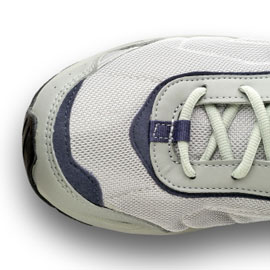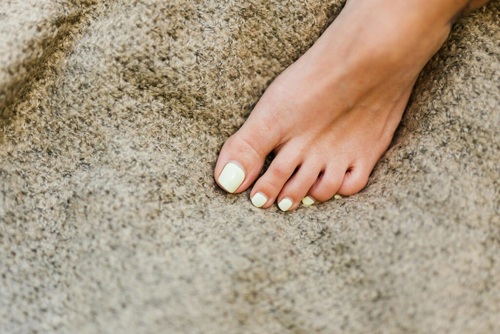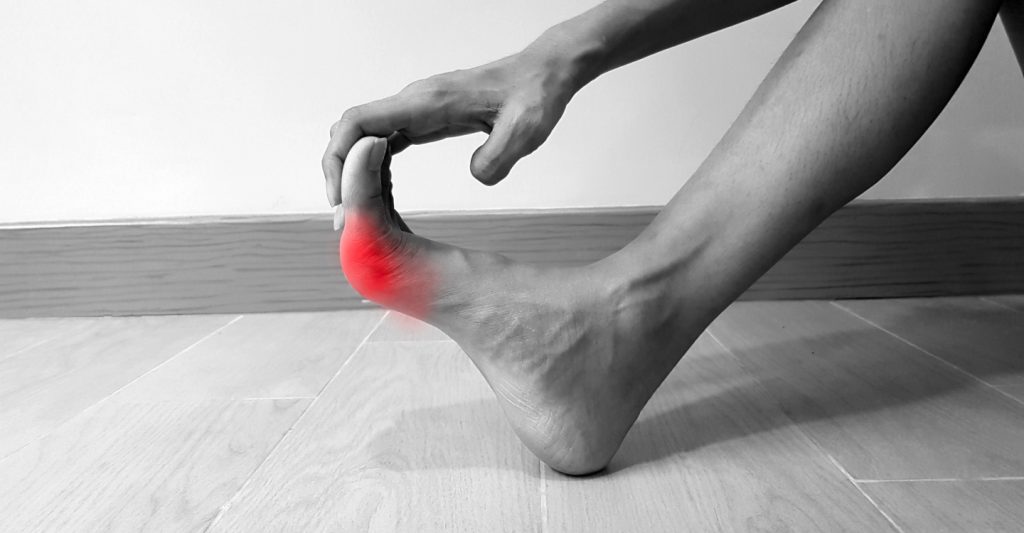 Debunking the myth of “toning shoes”
Debunking the myth of “toning shoes”
If you suffer from a source of acute foot pain like bunions, you’ve probably tried just about everything to ease your discomfort. When you set foot in a shoe store, you may be barraged by many different brands and styles that are claimed to offer a variety of benefits, from weight loss help and posture improvement to accommodation for your painful bunions. As with any sales pitch, it’s important to remain a skeptic when such claims are made. Though some companies may actually provide what they offer, others cite faulty studies as evidence of their products’ greatness, creating marketing campaigns out of what may amount to little more than blatant lies.
Last month, the FTC found this to be the case for Skechers Shape-ups. Though they never claimed to help with problems like foot pain, advertising for the shoes focused on their “incredible” abilities to help you tone muscles and burn calories. This effectiveness, they said, came from the curved shape of the Shape-ups’ soles, which had a capability to increase the wearer’s exertion with every step regardless of the activity.
Setting the Tone for Toning Shoes
In 1996, a company called MBT (Masai Barefoot Technology) developed the first toning shoe, basing their design on a study of biomechanics in the Masai tribe of Africa. They believed that the Masai exhibited such excellent posture and elegance because they walked barefoot on naturally uneven and sandy terrain and attempted to create a shoe that would replicate this effect. Expensive and unusual, MBT shoes slowly gained a reputation for their therapeutic nature, with a reported capability to activate muscles, reduce back pain, and improve posture and balance.
Since then, myriad shoe companies have followed suit, Skechers included. Though MBT did not make overt claims about weight loss or muscle toning, Shape-ups leaped to that conclusion with their release in 2009 and the market boomed as a result. Sales of toning shoes shot from $17 million in 2008 to $145 million in 2009 and skyrocketed to $1 billion by 2011. Though admittedly much cheaper than MBT shoes, Shape-ups cost up to $100 a pair, justifying the price with claims of their health benefits.
What was the basis for these claims? According to Skechers, four studies were conducted on the efficacy of their toning shoes, two of which were spearheaded by a chiropractor who was married to a Skechers marketing executive. These studies were so laughably unconvincing that the clear conflict of interest posed really makes no difference in their believability.
Scrutinizing Skechers’ “Science”
In one study, eight participants reportedly lost 3.25 pounds on average when using Shape-ups, but there was no control group using normal workout shoes to compare these results to. In another that used a slightly more convincing sample size of 80 participants—including a control group—the data was actually altered to reflect better on Skechers, as some subjects who gained weight wearing Shape-ups were reported as losing weight. Two participants from the control group who lost weight were reported as part of the Shape-up group. The data from other participants went missing. Many of the subjects were related or connected in some way to the chiropractor conducting the study.
Unsurprisingly, the FTC found fault with these claims, and with Skechers’ decision to use them in widespread advertisements like a 2011 Super Bowl ad. Skechers was forced to pay a $40 million settlement and pressured to change its advertising messages for its toning products. Skechers claims that they only paid the settlement to avoid the more substantial costs inherent in fighting the lawsuits and continue to stand behind its products’ supposed benefits.
Though Skechers is pursuing additional “study” of its Shape-ups, individuals who purchased the shoes will be eligible for a direct refund from the FTC or are invited to participate in a class-action lawsuit against the company. Despite the fact that other outside research has produced no evidence of improved calorie burning or muscle toning, Skechers reps say that they will be able to continue to market the shoes as they have been, though likely with diminished success considering the circumstances.
And the Moral of the Story is…
The lesson here is to take everything presented in consumer advertising with a grain of salt. Quick fixes are seldom real solutions to a problem. Whether you suffer from foot pain, back pain, obesity, or bunions, it doesn’t matter—your doctor is the only one truly equipped to help you deal with these kinds of medical issues. It’s inviting to think that your problems will dissolve away simply by buying an exciting new pair of shoes, but this kind of thinking is unrealistic and exactly what many advertisers rely on to get you to buy their products.
 Debunking the myth of “toning shoes”
Debunking the myth of “toning shoes”






